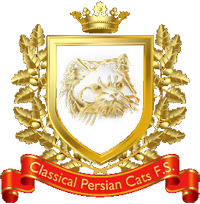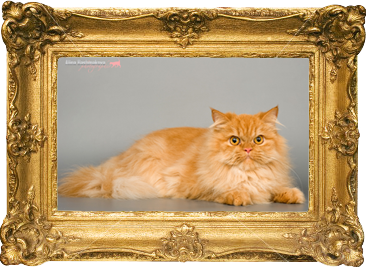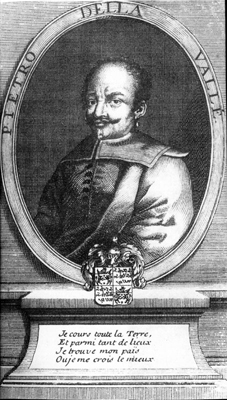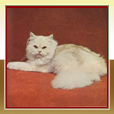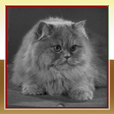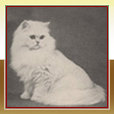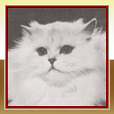|
Home \ Welcom \ Breed history
Breed historyProvenance of Persian cat has several versions. According to one, the Persian and Angora cats have a common history. On the other – the birthplace of long haired cats is Russia. It is thought that long hair domestic cat – is the result of mutation. This mutation led to the appearance of Angora goats and rabbits. And at last one more version – the ancestor of the Persian cat was a wild cat manul. According one of the theories the long-haired cat have been found first on the territory of Persia (now –Iran).It was there an Italian aristocrat and traveler Pietro della Valle during his trip through Eastern Europe, Turkey, Persia and India (1614-1626) discovered the unusual cats with long hair. He described his journey in his book “The trip to Turkey, Persia and India in the 54 letters.” In this book he described in detail the “astonishing variety of Cats”, which he saw in 1620 in Iskhafane (Persia). Pietro della Valle sent four pairs of these amazing cats to Italy for breeding but their subsequent fate was unknown.
After some time the French scientist and politician Nicola-Claude Fabri, seigneur de Peiresc, contemporary Pietro della Valle, consisting of correspondence with him, was interested with unknown at that time in Europe cats and acquired several long haired cats from Turkey. These were the Angora cats. His friend Cardinal de Richelieu was one of the first owners and fans of the Angora cats. With such ifluential patrons Angora cats quickly became popular in the French royal court in the early 17th century. Paying tribute to fashion, many Europeans brought from the East long-haired cats called Angora. In 1766 in the “Natural History” (author – Francois-Louis Leclerc Comte de Buffon) were described two types of long-haired cats. One of them – with long silky hair and slender body like a modern Angora, the other – with strong bone, pronounced stop, wider setting of ears and thick coat with abundant undercoat. Most modern experts agree that at the end of the ages 16-17, from the East to Europe were introduced two varieties of long-haired cats. Long-haired cats were fashionable and were at that time a symbol of prosperity. Kings – Louis 14, then Louis 15 and Marie Antoinette – have been their ardent admirers. In the future, long-haired cats brought from France to other countries, often called not Angora, Oriental or Persian, but French. In addition they called Asian, Chinese, Russian, depending of the location where they taken from. But despite this they were brought to Europe in the early 17th century from Afganistan, Iran and Turky. But there is a version denying Easter origin of Persian cats. This theory confirms that according to the geography distribution of allele L (Long) in the natural population of cats most likely birthplace of long-haired cats should be considered Russia. The harsh climate of this country contributed to the development of this trait. From Russia long-haired cats could be brought to the East. And only then in the late 16th century as the “oriental exotic” long-haired cats came to Italy, then to France and so on. Developed at that time Russia’s trade with the East, paved trails merchants trading caravans – these history facts speak in favor of this version. Also quite likely the version that it’s type and constitution the Persian cat inherited from a wild cat manul (felis manul). This sluggish inhabitant of mountain areas of Asia has a squat body, weight 3-4 kg, lush weepers, short legs, flat “face”, round eyes and small rounded wide-set ears. Length of coat with a well developed undercoat reaches no more than 6-7 cm in contrast to the more long hair of Persian cats. Anyway Persian cat came to the Great Britain – a country that is rightly called the founder of the felinology. This was an auspicious time when British cat lovers started deliberately and seriously engaged in cultivation of various breeds. It was in the Great Britain there was a final separation of the two species of long-haired cats. Lightweight flexible graceful cats with fine silky hair, tapered head and pointed ears were called Angora, and more massive, stocky, with a round head, with long thick hair – French or Persian. Already in 1887 the Persian breed has received official status, becoming one of the first recorded breeds of domestic cats of Great Britain. From wide variety of proposed breed names was chosen one – the Persian longhaired. This was the beginning of the rapid rise in popularity of Persian cat worldwide. It should be clarified that under the name “Persian” originally recorded only the blue variation of the long-haired cats. In the future other colors of Persian cats were received – white, red, black, tortie and so on. Each color occupied a separate fan-club. Author of the first in the world felinology standards Harrison Weir, called it "Points of Excellence" (1889) and described next colors of Persian cats: white, black, blue, red and also “any other solid color”, and also brown tabby, blue tabby, silver and light-blue with white tabby. But for o long time one of the most popular were just blue cats. Perhaps because the arbiters of that time – the Queen Victoria and the Prince of Wales ( in the future – Edward the Seventh) – loved especially Persian cat of blue color and set up special prizes for this breed on cat shows of that time. The Gouverning Council of the Cat Fansy (GCCF) was founded in 1910. It united different clubs of cat lovers in Great Britain. That time the Persian cats of different colors were judged as different breeds. The standards of that time described every color in detail with scale scores. By the end of 19th century Persian cats came to USA and gained immense popularity there. The next phase of development of Persian cats began. Initially American breeders guided by English standards. But soon they found their own ideal of Persian cat which was significantly different from British standard. They have chosen as the desirable type more compact, more massive, more unusual and decorative type of Persian. All their thoughts rushed to the creation of this type of Persian. As a result of their “passion for breeding” soon in litters of red and red tabby Persian kittens began to be born with a very unusual appearance. They had abnormally short nose, very deep stop, hanging over the eyes forehead, deep creases from the corners of the eyes to the mouth and prominent, wide set eyes. Due to the extremely short nasal animals of this type had a pronounced breathing problems, blocked tear ducts and malocclusion. These problems are chasing them up to date. However they had a funny nice faces and became popular. They were called “Pig-face” by analogy with the dogs breed Pekingese. The problems of such cats (high mortality, delayed development, stunted growth because of starvation and other negative consequences) caused concernment of representatives of the veterinary services and animal protection societies. Further breeding work aimed to eliminate the negative effects of “progress”. With time in the course of the long and purposed breeding a new image of an extreme type of Persian cats was appeared. Thus, none of the existing breeds has not been altered by man so radically. All breeders of Persian cats divided into two camps – the lovers of traditional classical type of Persian cats and lovers of extreme American type of Persian cats, who considered the traditional type to be obsolete. Despite the ongoing controversy in the world there are many feline systems, clubs, nurseries of Persian cats traditional classical type. There are many fans of this type of cats among the famous and ordinary people in all parts of the world.
Translation Olga Belyaeva |
|
Contacts +7 (903) 167-15-51 |
© 2010 - 2011 “Society of Friends of Persian cats classical type”
|







